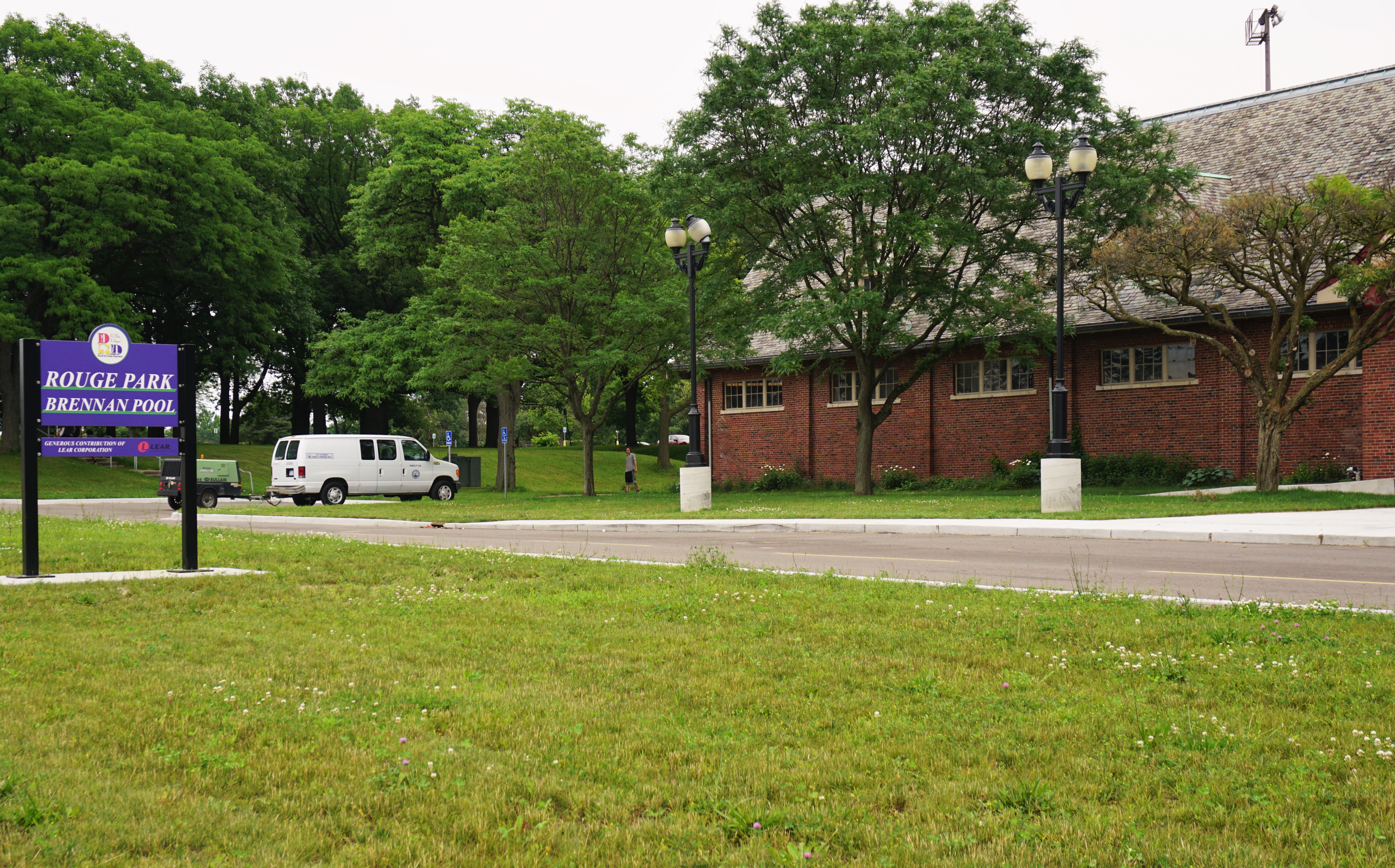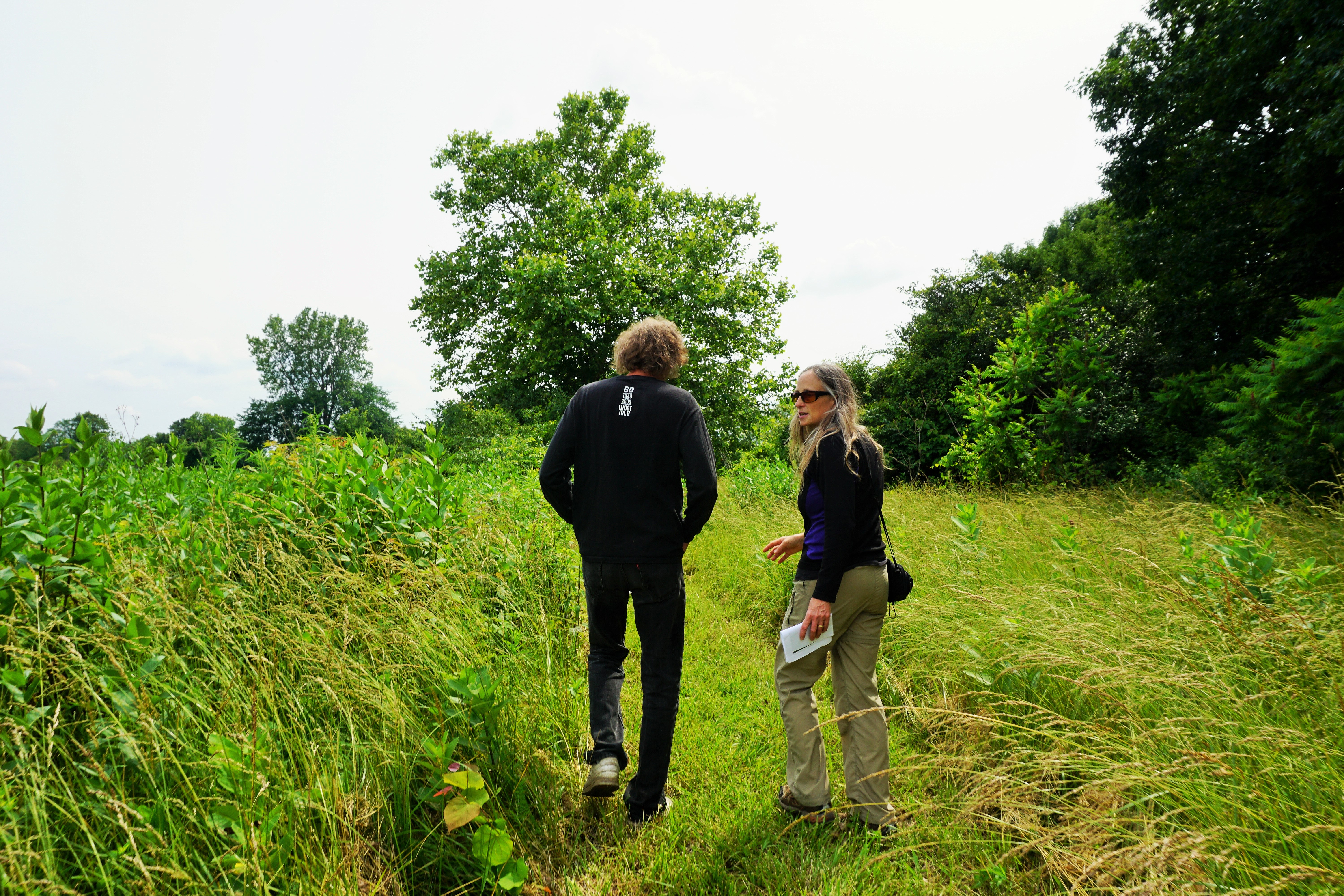Rouge Park Fights Reputation for Crime with More Police, New Investment
Detroit’s Rouge Park, known for rampant crime, now has new police patrols and investment. But much more work remains.


Parks are supposed to be places for fun and comfort.
But in Detroit, some parks have gained a reputation for being magnets for crime. Perhaps none more so than the vast expanse of greenery in the northwest section of the city called Rouge Park.
That reputation, and the incidents that created it, appear to be changing.
But not yet for everyone.
A pair of middle-aged women sat on a wooden bench at Rouge Park, arms wrapped tightly around themselves, eyes creased as they watch the pre-school children they brought to this playground.
One of the women, Cynthia Franklin, says there’s good reason to keep a close watch on any child at Rouge Park.
“Crime is bad. Found a body over there, over by Spinoza. Some human remains,” she said.
In fact, the remains turned out to be the bones of an animal.
But sitting next to Franklin, Sandra Bailor says the park has a well-earned reputation for being a place where the bodies are literally buried.
She says, “This is a bad area. A lot of crime be happening around here. So you don’t feel safe nowhere really. Because there be too much young kids up here starting stuff. And you don’t know whether they got a gun or whatever, you know what I’m saying? So you’re scared to carry any money, any personal thing on you.”
Both women say they’ve seen many more police officers here over the past two summers than ever before.
Franklin complains that most police she sees are mainly stopping cars and writing traffic tickets.
“It’s a kids park,” Franklin said. “So why every time we pull up they pulling us over for something? It’s just a constant thing. And it’s in the hood and there ain’t that many places for our kids to go in the hood. We don’t have no recreational stuff for ‘em, period. They don’t have no basketball court up here. What about the teenagers? Why shouldn’t they have no place to play basketball? It’s nowhere. And all they got is police for us.

In a Detroit police car Officer Myron Watkins cruises past the playground, as if able to read the thoughts in the women’s minds.
A 17-year veteran of the force, much of that time spent with the Gang Squad, Watkins says he received less grief from the murderers and drug dealers he was apprehending then from people whose car he’s ticketing at Rouge Park.
And Watkins says that’s fine if the end result means making the park safe.
He says, “We come out here and we enforce the laws. So that keep a lot of people that want to come out here to break the laws — they don’t want to come. So you come out here with expired plates, no insurance, you’re playing loud music, I might have to have a conversation with you. You know police presence means a lot. If the bad guys see that the police is riding around in the park they don’t want to come to the park. They gonna go someplace else.”
Watkins turns into a parking lot set between a glistening, refurbished swimming pool and an overgrown, cracked tennis court.
He says it’s where most people gather at Rouge Park, and the first place police targeted when he joined the newly-formed parks unit.
“In the beginning when we first started this detail last year we came to Rouge and we had over 400 cars in this parking lot,” Watkins said. “We had to start clearing the park out because it was so crowded, we couldn’t drive through. So we just had to get people out of the park. And that went on for about three weeks, until people got the message that we taking cars and towing people’s vehicles and locking people up. We was getting a lot of lock-ups at Rouge Park.”
Watkins says those efforts have helped drastically reduce crime at the park.
“Before they started a park unit to patrol Rouge, Rouge was kind of out of control. You had a lot of trouble up here. You know people would come up here, smoke, drink. You combine that with a lot of people and the parking lot was crowded…something‘s bound to happen. So lot of stuff would jump off at Rouge Park.”
The very size of the park makes it a place where things could easily happen without being seen.
Rouge Park is more than a thousand acres, big enough that all of Belle Isle could fit inside it.
And it’s a place of contradictions, encompassing a freshly-painted horse farm around the corner from a weathered police shooting range. Wide fields serve as landing strips for model airplanes set amidst struggling urban neighborhoods.


Even Rouge Park’s forests and foliage hide surprises.
“This spot that we’re in right now used to be the entrance to the Nike missile silos. So that’s kind of why it’s remained open like this,” says Sally Petrella, the president of the group Friends of Rouge Park.
She says it’s an organization that has relied on donations and innovation to help where the cash-strapped city has been unable to.
“There’s been a lot of issues with resources in the city and they haven’t been able to take care of a lot of the things in the park. And so a lot of our facilities here are run down. The park itself doesn’t have a lot in the way of facilities. It was created back in the 20’s when the city purchased quite a few different farms. Since the recession, or depression I call it, it’s been a real struggle to get this park taken care of,” Petrella says.
The group’s Peter Stark steps across a trail winding through tall, thick grass. It’s a walkway he says could become an attraction at the park.
“It’s actually a trail that had been built back in the 1920’s,” Stark says. “And there’s still a lot of remnants of the stonework back in there. There’s a beautiful stone bridge. It’s so overgrown now from disuse, but we want to completely bring that back.”

Stark notes that Lawrence Tech University helped create a master plan to someday refashion Rouge Park into a Detroit version of New York’s Central Park.
But some long-time visitors here say what’s already happening with Rouge Park borders on the miraculous.
That includes a tall, bearded man watching his two sons practice football on an uneven Rouge Park field.
David McCoury says he would have been scared to bring his children here a few years ago.
But not now.
He said, “There ain’t no shooting. I’m out here with my kids. We feel safe. This brother over here, he’s with his kids. You know it was a big drug thing in the 80’s, 90’s. So it was different, you know what I’m saying? They cleaned it up, they did a beautiful job. It takes time.”
McCoury says he still won’t bring his kids to Rouge Park at night. But he says that applies to almost any section of Detroit.
The difference now, McCourty says, is that a kind of renewed light is shining on the park.
He says it’s not just that people know the police are patrolling Rouge Park, but that they realize their fellow Detroiters are watching too.
“There’s people out here drinking and leaving trash everywhere. Not caring, you know? When you got city officials that don’t care the people not gonna care. When you got people who care then we care.”
And McCoury says in Rouge Park, a place mixing a long reputation for crime with pockets of new-found investment, creating the idea that Detroit is actually concerned about what happens here is a pretty good start.
There are many surprises in Rouge Park’s vast expanse. Here are a few…
(Slide show by Dawn Uhl-Zifilippo)
